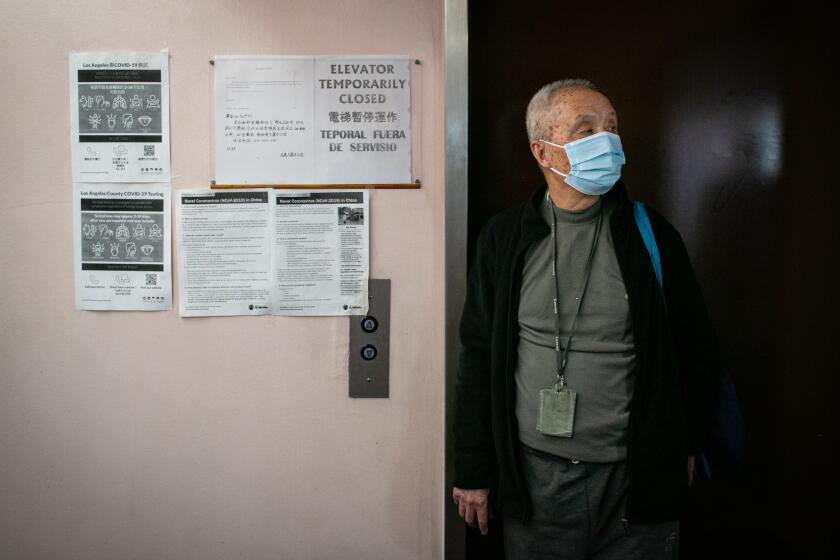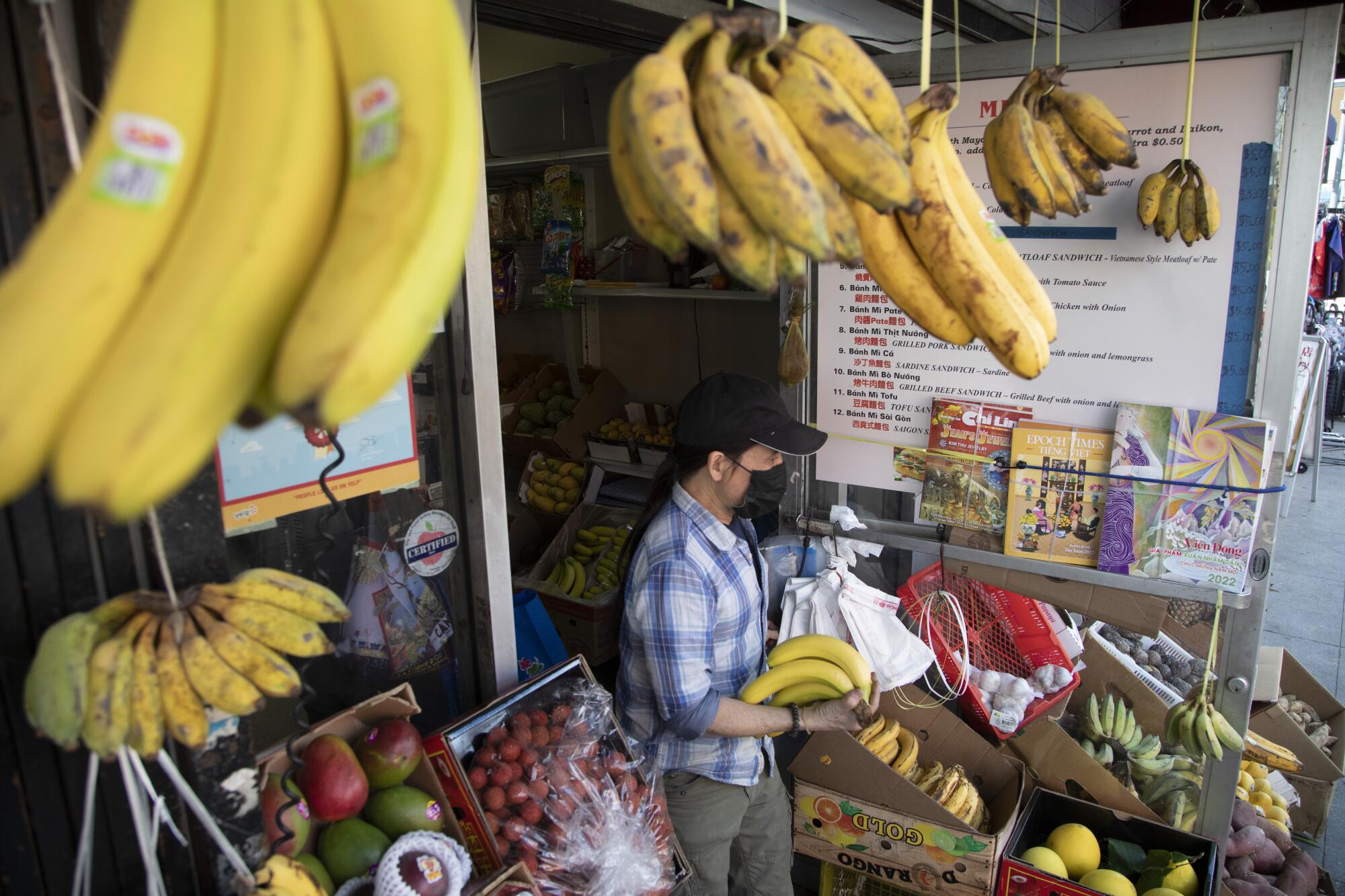
- Share via
Nearly every day for more than three decades, Vi Ha’s mother walked from her Chinatown apartment to Ai Hoa Market.
Since the grocery store closed in 2019, she travels alone by bus as far as San Gabriel to buy fresh produce, rice noodles and specialty cuts of meat. To make pho for the holidays, the 73-year-old immigrant from Vietnam had to visit four stores.
“What used to be a daily walking trip to the market is now much more difficult,” Ha, a librarian at the Central Library, said of her mother.
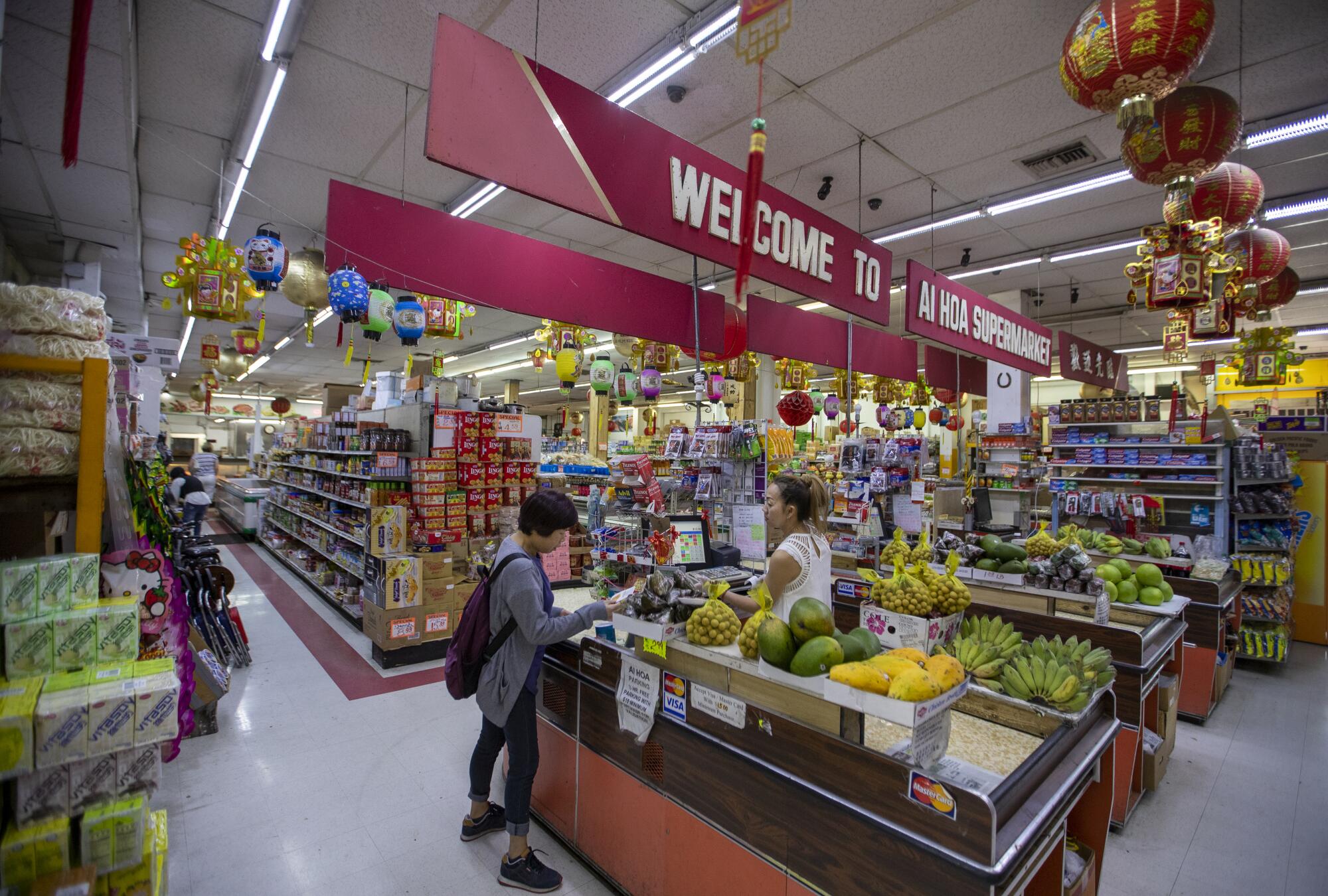
The closure of Ai Hoa has left Chinatown without a full-service grocery store for more than two years.
As the neighborhood has become one of L.A.’s trendiest dining destinations, its elderly immigrant residents live in a food desert, struggling to buy groceries easily and affordably, residents and community organizers say.
Free-spending millennials and Gen Zers, as well as food critics and influencers, come to Chinatown to eat Nashville-style hot chicken, uni tostadas, Japanese katsu sandwiches and vegan croissants.
Column: Chinatown without Chinese grocery stores, and the delicate balance of ethnic communities
Chinatown is about to lose G and G Market as well as Ai Hoa Market, leaving the neighborhood without a full-service Chinese grocery store.
Meanwhile, many people who live in the neighborhood, which is nearly 50% Asian with a median household income of about $36,000 — slightly less than half the countywide figure — have trouble finding staples such as milk, yogurt, beef and pork.
Some small markets along Broadway and Hill Street sell live chickens and fish. Bodegas stock Asian vegetables, including bok choy, taro root and napa cabbage. In recent years, street vendors have proliferated.
Since Ai Hoa closed after 40 years in business, what’s missing is a centrally located grocery store with a large selection, affordable prices and consistently high quality that opens early and closes late.
For those who rely on public transportation, the lack of a supermarket hits especially hard.
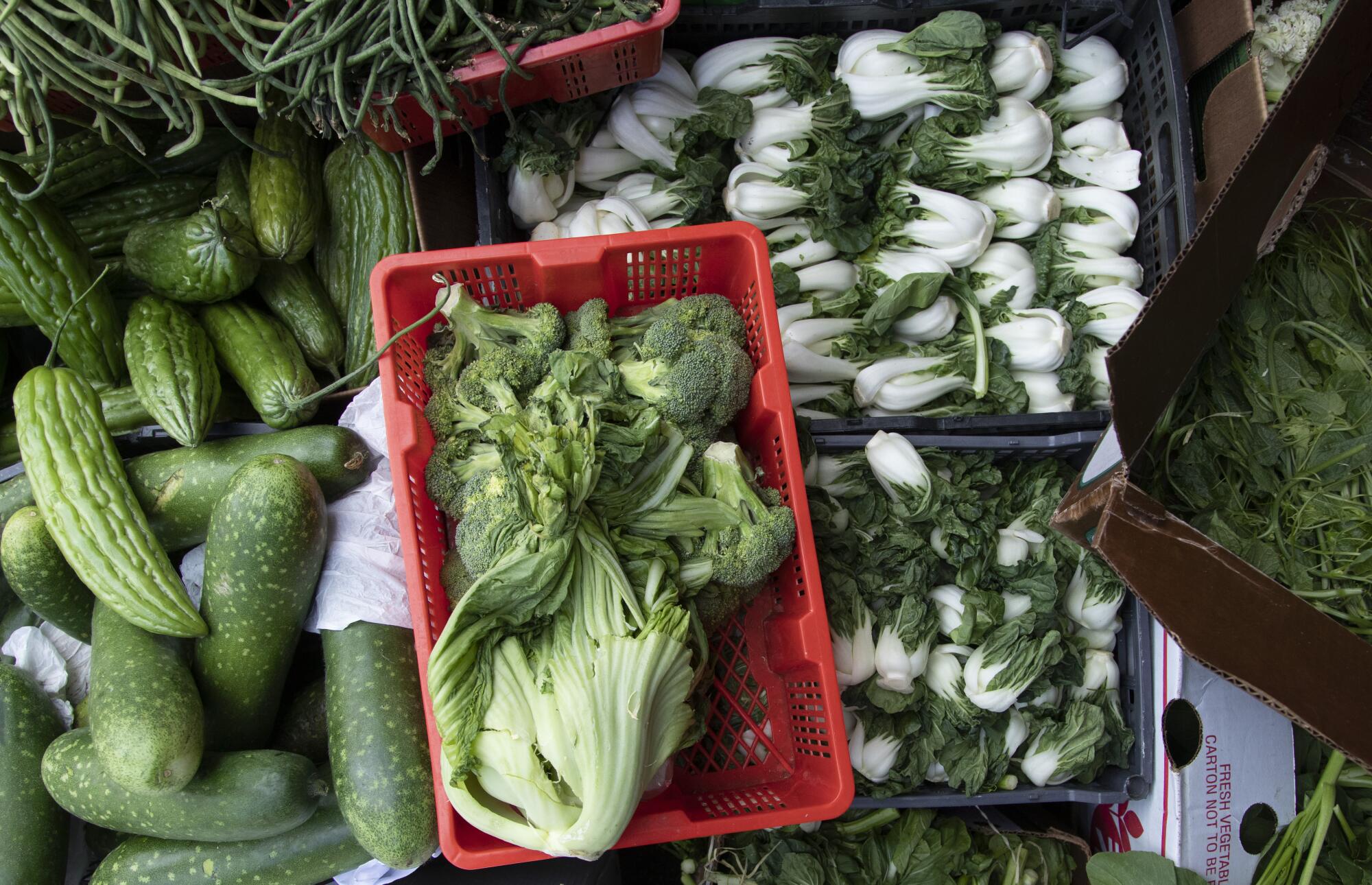
“We do have produce in the neighborhood, [but] we don’t have rows and rows of fruits or eight different fish to choose from,” said Harry Chin, 68, a retired cook who lives on Alpine Street.
The smaller stores carry different items from week to week, making it hard for his wife and him to plan meals.
And then there are the prices: At the bodega around the corner, he said, napa cabbage goes for $3 a pound, when it is less than $1 at most Asian supermarkets.
Chin can’t always wait for his son to drop by with groceries. He once gave in and bought $20 worth of drooping vegetables for hot pot.
“We’re stuck in an immigrant district,” he said.
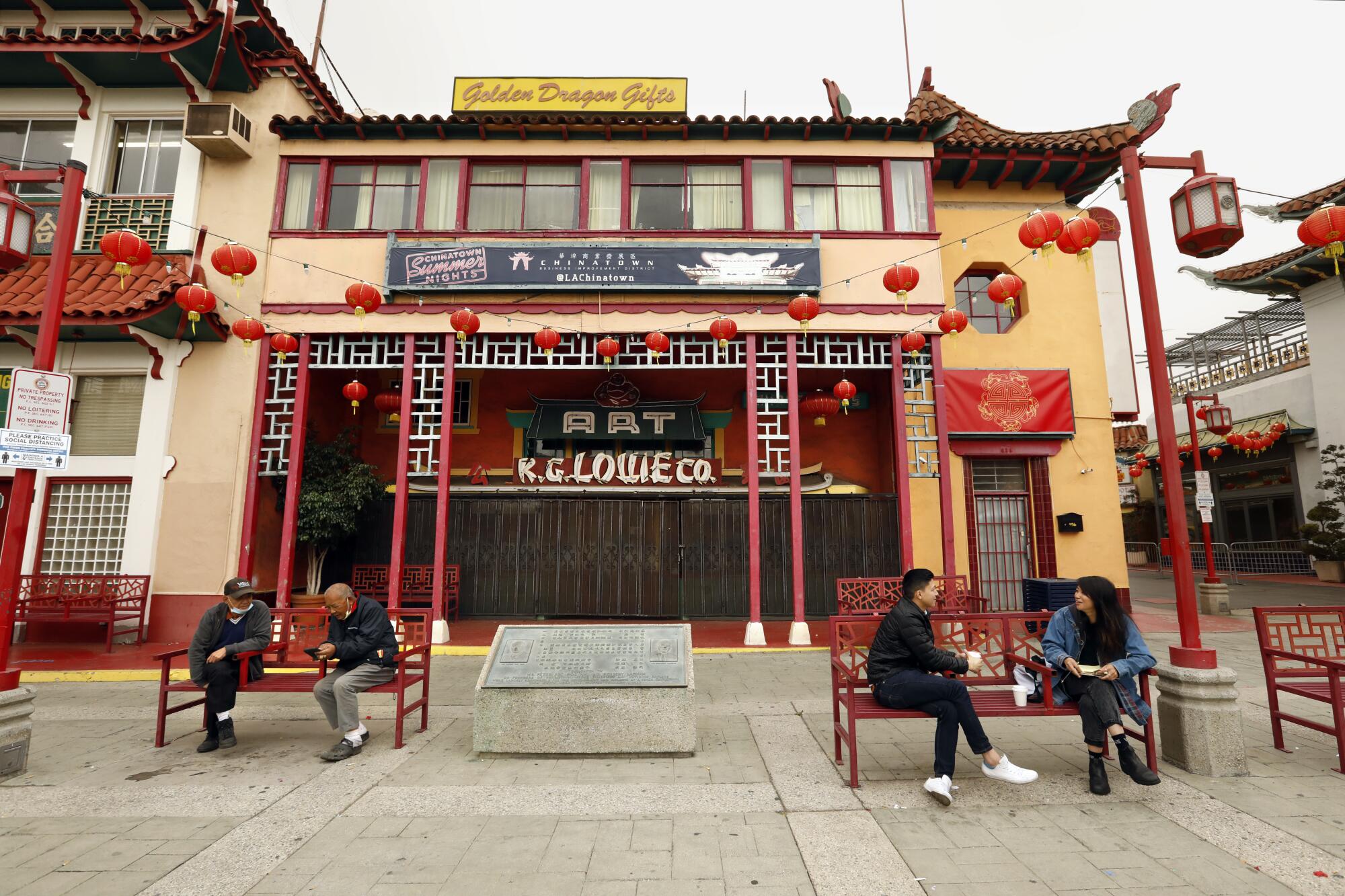
Hanh Pham, who has lived in Chinatown for more than two decades, depends on neighbors to buy egg noodles and hoisin sauce for her when they shop in the San Gabriel Valley.
“They just can’t rip us off,” the retired cashier, 70, said. “Not all of us can afford to eat out at restaurants anytime we want to.”
Multiple residents described feeling trapped in the 16-story Cathay Manor building, which has been without working elevators for weeks.
Lynn Nguyen, 35, a librarian who moved to Chinatown in 2020, can easily hop in her car and go to Ralphs downtown or Trader Joe’s in Silver Lake, rounding out her shopping at specialty shops and farmers markets.
But she worries about elderly neighbors who can’t do the same.
Many live at Cathay Manor, a massive affordable housing complex that has been plagued by problems, including malfunctioning elevators. To help seniors stranded on the upper floors, volunteers have been hand-delivering bags of rice and produce.

The street vendors have emerged as a particular concern for some residents, who say the produce is often poor quality, sold at inflated prices.
“If you come to Chinatown right now, it’s filled with people selling whatever they can sell that they got from Super King or anything random,” said Nguyen, referring to the supermarket chain known for its vast assortment and low prices.
The process to get a city permit for street vending, which has been legal since 2019, is arduous, and enforcement has been lax.
Many Chinatown vendors simply spread a sheet on the ground. Some shop owners complain about produce displays extending across the sidewalk, in violation of city rules, and mounds of trash left behind at the end of the day.
Column: Moldy walls, cold stoves and broken elevators: This is life at Chinatown’s Cathay Manor
For residents of a building that was one of Chinatown’s most significant political accomplishments, conditions have never been worse.
On a recent day, Helen Wang displayed chopsticks, tangerines, grapes, soda and homegrown chile peppers on a faded cloth.
Wang, who is in her 70s and lives in Alhambra, said she is trying to supplement the monthly allowance her children give her. She doesn’t want to be completely dependent on them.
She said she charges “just a little bit” above supermarket prices. “I need to create some kind of income,” she said.
She is unsure whether her stand is legal, saying she is not familiar with the laws.
Residents say the neighborhood has plenty of room for a supermarket, pointing to a number of large vacant buildings, such as the former Dynasty Shopping Center that closed last year.
But there are disagreements about what kind of market would best serve the community — a microcosm of wider tensions as the neighborhood evolves.
Similar thorny issues are cropping up in Chinatowns around the country, many of which were neglected for years and are now being quickly reshaped.
Over the years, L.A.’s Chinatown has been home to several Asian supermarkets and, for a short time, a controversial Walmart Neighborhood Market. G & G market closed around the same time as Ai Hoa.
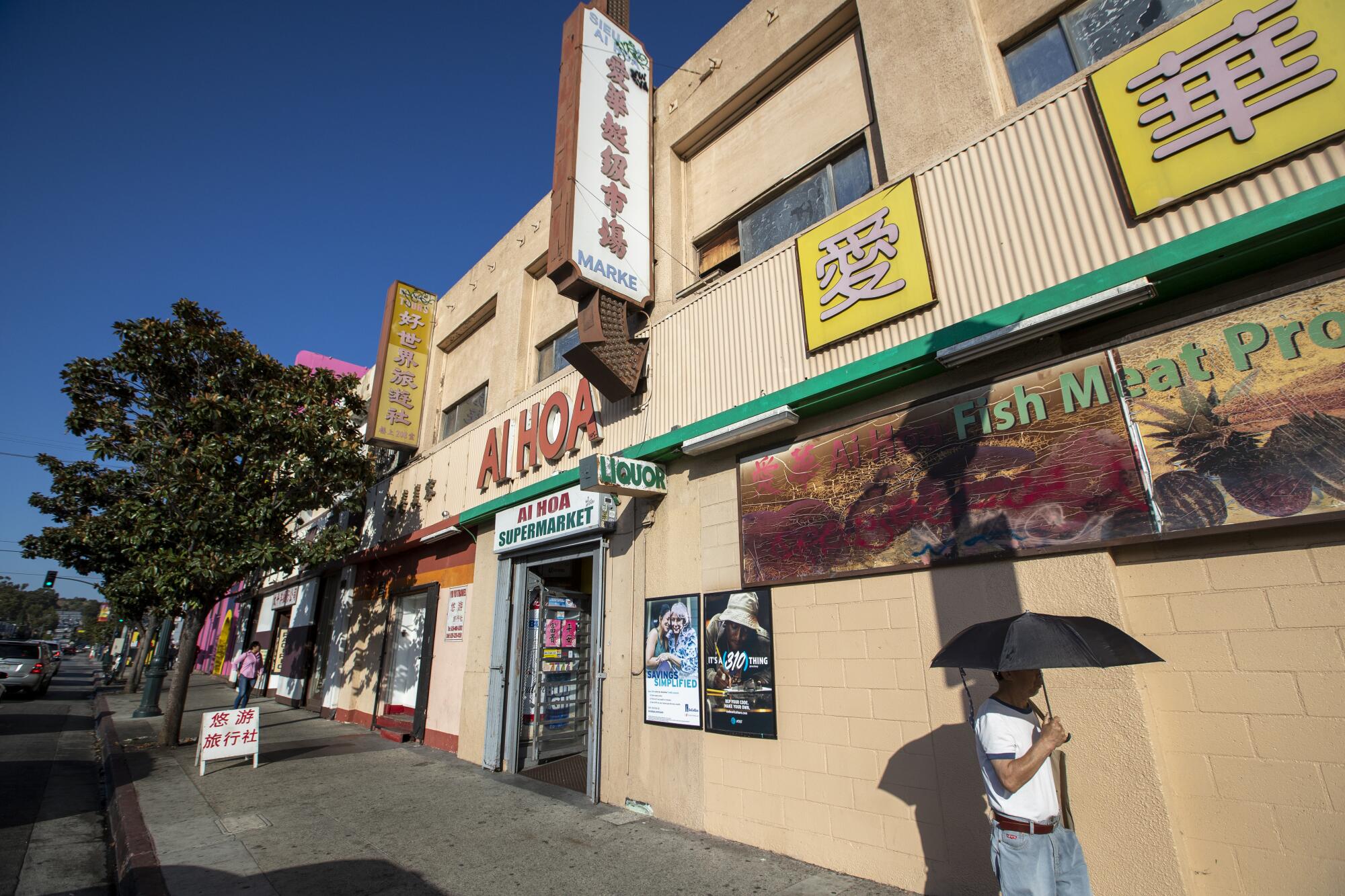
Property developer Gilmore, which bought the Ai Hoa building and nearby storefronts in 2018 for more than $15 million, said at the time that it would open a new market in the space.
Yet the building at Hill and College streets remains empty. Gilmore did not return calls or emails seeking comment.
Supermarket chains have shown little interest in Chinatown so far, preferring areas that have denser populations of younger, wealthier residents, such as the Arts District, South Park, Little Tokyo and Bunker Hill, said Derrick Moore, senior vice president for retail at CBRE.
“Retailers look for bigger numbers,” said Moore, who focuses on downtown and nearby neighborhoods for the commercial real estate brokerage. “They want to see exponential growth, and we just haven’t seen it in Chinatown.”
People wish that we had a one-stop shop here. But that’s not the reality. That shop is gone.
— Chinh Le, owner of Banh Mi My Dung in Chinatown
George Yu, executive director of the Chinatown Business Improvement District, noted that “even the Chinese-operated markets aren’t able to make it in Chinatown” because a disproportionate number of residents are low-income.
“There needs to be a balance of our existing housing inventory — which is affordable housing — with higher-income residents,” said Yu, who also manages the real estate at Chinatown’s Far East Plaza, home to traditional Chinese restaurants and newer businesses including Howlin’ Ray’s hot chicken and Amboy, a burger stand and butcher shop. “Until then, no market is going to come.”
A number of high-rise residential developments are in the pipeline for Chinatown.
Hundreds of renters — lured by the new units as well as Chinatown’s central location and proximity to retail, restaurants and nightlife — are expected to move in over the next several years.
They will probably have high disposable incomes and enjoy eating out, which will attract new retailers, Moore said.
But community organizers worry that those businesses might not suit Asian immigrants in price or the assortment of products.
“There’s nobody promoting all the immigrant businesses,” said King Cheung of the Chinatown Community for Equitable Development, a volunteer group that has been outspoken about preserving the neighborhood’s historic identity.
Johnny Lee, chef-owner of Pearl River Deli, said he chose Chinatown for his Cantonese restaurant because he grew up in nearby Lincoln Heights. He has fond memories of frequenting Chinatown as a kid and felt it was important to start his business in the neighborhood.
Pearl River Deli began as a pop-up in 2018, selling dishes such as char siu and a Macau pork chop bun, and is days away from opening as a permanent spot on Mei Ling Way.
“I’m pretty sure I could have done something on the Westside and made more money — it would have been a more guaranteed success, you know?” Lee said.
The shortage of grocery options in Chinatown, along with decreasing demand for other products, has led some retailers to add produce to their shelves.
Despite its name, the China Book Store on Broadway long ago stopped stocking reading material, replacing its inventory with noodles, produce and household goods.
Next door, Hugo Luu has converted his herbal medicine shop, which he opened 13 years ago, to a market called Yue Wa.

Dragon fruit, Thai mangos and $3 bags of homegrown kumquats are main draws for senior citizens who walk over from nearby apartments, greeting Luu like an old friend.
“You look around, you try to anticipate what customers might be seeking and you provide it,” said Luu, 54. He and his wife give discounts and extra citrus to customers, sometimes even helping them with household repairs.
“It can be like a huge, huge family here. We all have regulars who shop with us,” he said.
At Banh Mi My Dung on Ord Street, owner Chinh Le exclusively sold sandwiches until customers began requesting items such as lychees. He soon added produce as well as newspapers and magazines.
Le, 53, said he offers most of the produce at a “tiny markup.” Garlic at his store is $2 a head, while vendors stationed outside price it at $1.75.
“People wish that we had a one-stop shop here,” he said. “But that’s not the reality. That shop is gone.”
More to Read
Sign up for Essential California
The most important California stories and recommendations in your inbox every morning.
You may occasionally receive promotional content from the Los Angeles Times.




